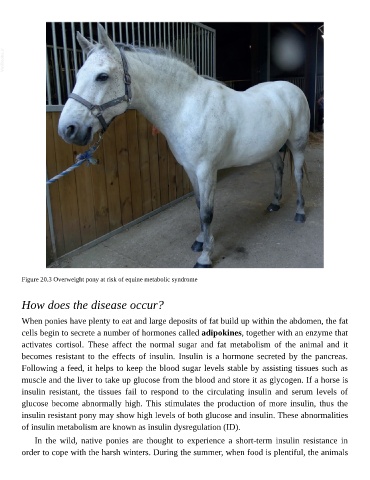Page 971 - The Veterinary Care of the Horse
P. 971
VetBooks.ir
Figure 20.3 Overweight pony at risk of equine metabolic syndrome
How does the disease occur?
When ponies have plenty to eat and large deposits of fat build up within the abdomen, the fat
cells begin to secrete a number of hormones called adipokines, together with an enzyme that
activates cortisol. These affect the normal sugar and fat metabolism of the animal and it
becomes resistant to the effects of insulin. Insulin is a hormone secreted by the pancreas.
Following a feed, it helps to keep the blood sugar levels stable by assisting tissues such as
muscle and the liver to take up glucose from the blood and store it as glycogen. If a horse is
insulin resistant, the tissues fail to respond to the circulating insulin and serum levels of
glucose become abnormally high. This stimulates the production of more insulin, thus the
insulin resistant pony may show high levels of both glucose and insulin. These abnormalities
of insulin metabolism are known as insulin dysregulation (ID).
In the wild, native ponies are thought to experience a short-term insulin resistance in
order to cope with the harsh winters. During the summer, when food is plentiful, the animals

